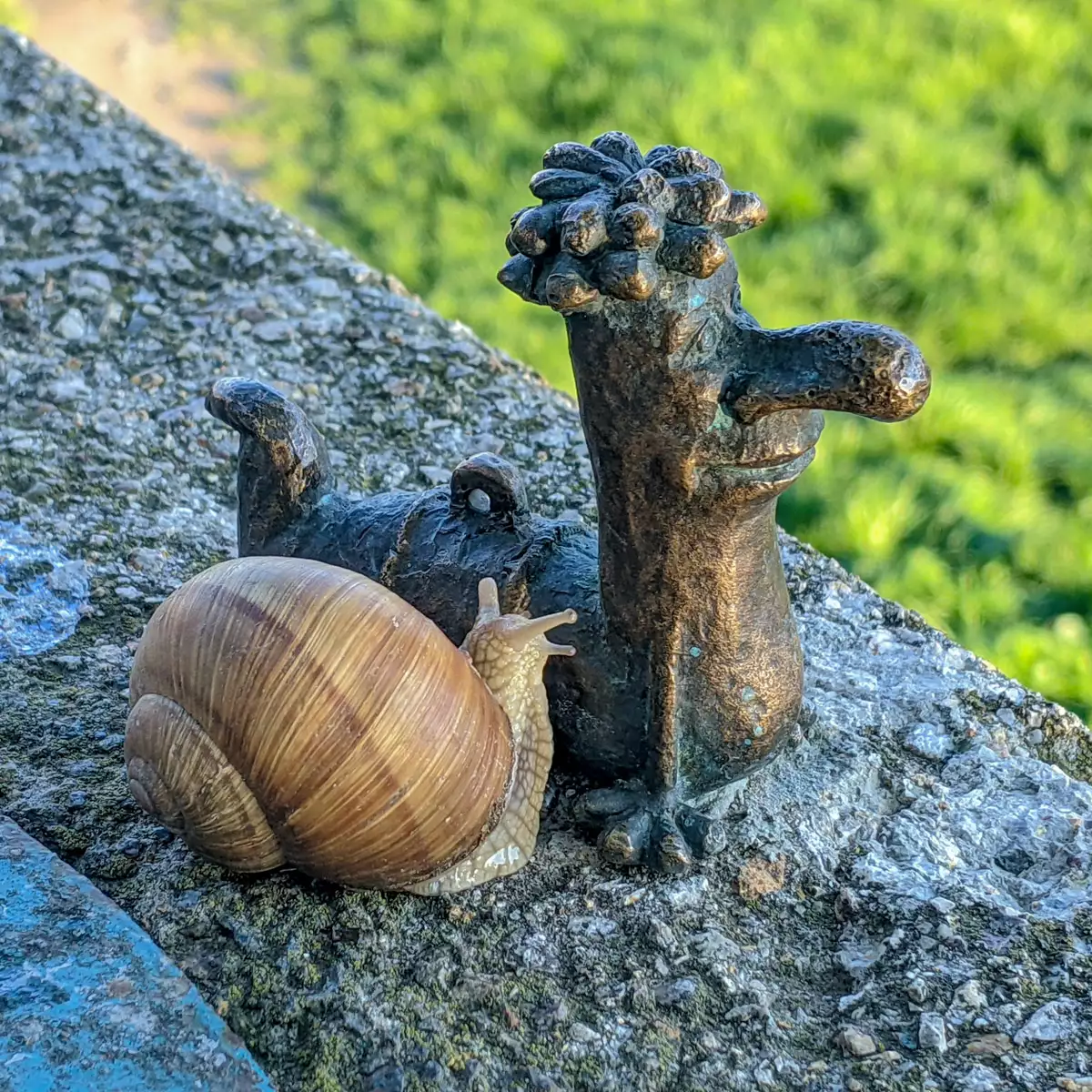🕒 Date of last update of the article: 16.02.2024 at 3:50 p.m | 🖋 Author: Viktor Shatrov
Надсилайте актуальну інформацію та отримуйте більше цільових клієнтів. Ми розмістимо ваш об’єкт у нашому каталозі та покажемо поруч із локаціями, а також у загальному каталозі, це безкоштовно!
🕒 Date of last update of the article: 16.02.2024 at 3:50 p.m | 🖋 Author: Viktor Shatrov
This original mini-sculpture was opened on November 27, 2016, and became Mykhailo Kolodko’s 27th miniature in Uzhgorod. Kukots was made of bronze and installed on the Botanical embankment (“on Koshty”) near the regional philharmonic hall (GPS: 48.621586, 22.299435).
According to legend, before going fishing, you must rub the nose of this bronze worm for a good bite. That is why the sculptor made the spout larger, so that it would last longer.

Locals should not be surprised, but tourists are scratching their heads, what kind of Kukots is this. The worm Kukoc is a character in a popular Hungarian children’s cartoon called “The Big Ry-ry-ry Fisherman”. The author of this cartoon masterpiece is a graphic designer, winner of the Kossuth Prize, Ferenc Schoidik. This cartoon consists of only 26 episodes, but it turned out to be enough for a whole generation of children, including those from Transcarpathia, to fall in love with this fairy tale. At one time, almost every third resident of the city fell asleep to a tale about Kukots.
Content
| 🗺 Location | N48°37′19″ E22°17′58″ |
| 🗽 Opening date | 11/27/2016 |
| 🧑 Sculptor | Mykhailo Kolodko |
| 🧭 Distance from the center of Uzhgorod | Near |
| 🚙 Road for | Car, on foot |
| 🏕 Stop with a tent | No |
| 🏡 Housing nearby | Uzhgorod |
| ☕ Cafes and shops | Uzhgorod |
| 🔰 Start | From the mini-sculpture of Saint Nicholas |
| 🚶 Walking distance | 180 m |
| 🕐 Approximate time | 2 minutes |
| ⬆ Rise | Mostly without ups and downs |
The original legend about Kukots was described by Nadiya Popadiuk in her book “Uzhgorod – the World Capital of Mini-Sculptures”. According to this legend, the Uzhgorod castle was once surrounded by a deep moat filled with water, over which a drawbridge was thrown. In the moat lived a giant fish covered with golden scales, with large blue eyes and wings instead of fins. She looked like a long snake and protected the inhabitants of the castle from the attack of enemies, she was called Uzhserpente. People said that she was the bewitched lover of Philip Druget, who continued to serve him in this guise and was immortal. Even when the count died, she continued to guard the castle until 1514, but during the great peasant uprising led by György Doža (the leader of the peasant anti-feudal struggle), the city was completely destroyed. All those who managed to survive began to ask Kukoc to help them save Uzhserpente. Hearing these pleas, a small worm appeared and helped them save the giant snake fish, which was carried and released into the local river, which later became known as Uzh. After looking into the magical eyes of Uzhserpente, Kukots was petrified and remained in Uzhgorod forever. Fishermen say that even today you can see the magical fish near the mini-sculpture of Kukots, which is located on the Embankment near the regional philharmonic hall, but it is impossible to catch it.
Author of the article: Viktor Shatrov
Number of articles: 1100+
Knowledge of languages:: Ukrainian, English
Favourite quote: “Travelling – the only thing that makes you richer“
He was born and lived all his life in Uzhhorod. He graduated with a gold medal from Uzhhorod School No. 1 named after Taras Shevchenko (now Uzhhorod Lyceum named after Taras Shevchenko). He studied at the History Department of UzhNU, graduating with honours in 2009. He worked as a senior researcher at the Transcarpathian Museum of Folk Architecture and Life, a lecturer at the East European Slavic University.